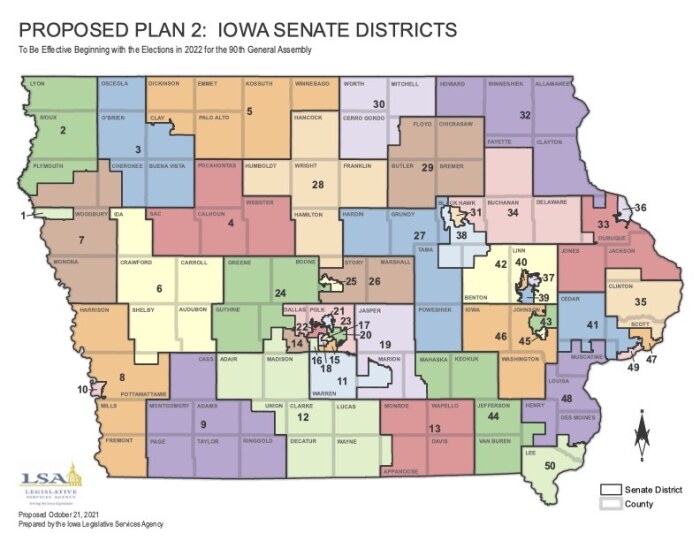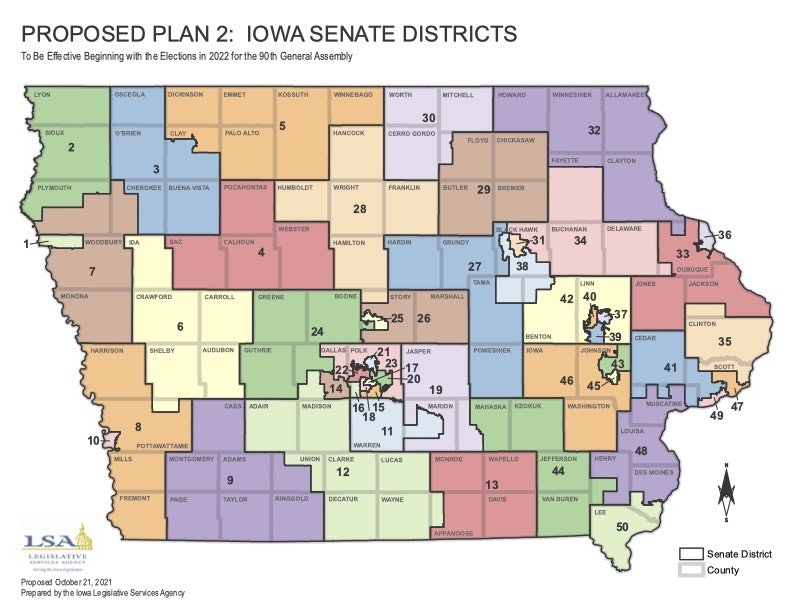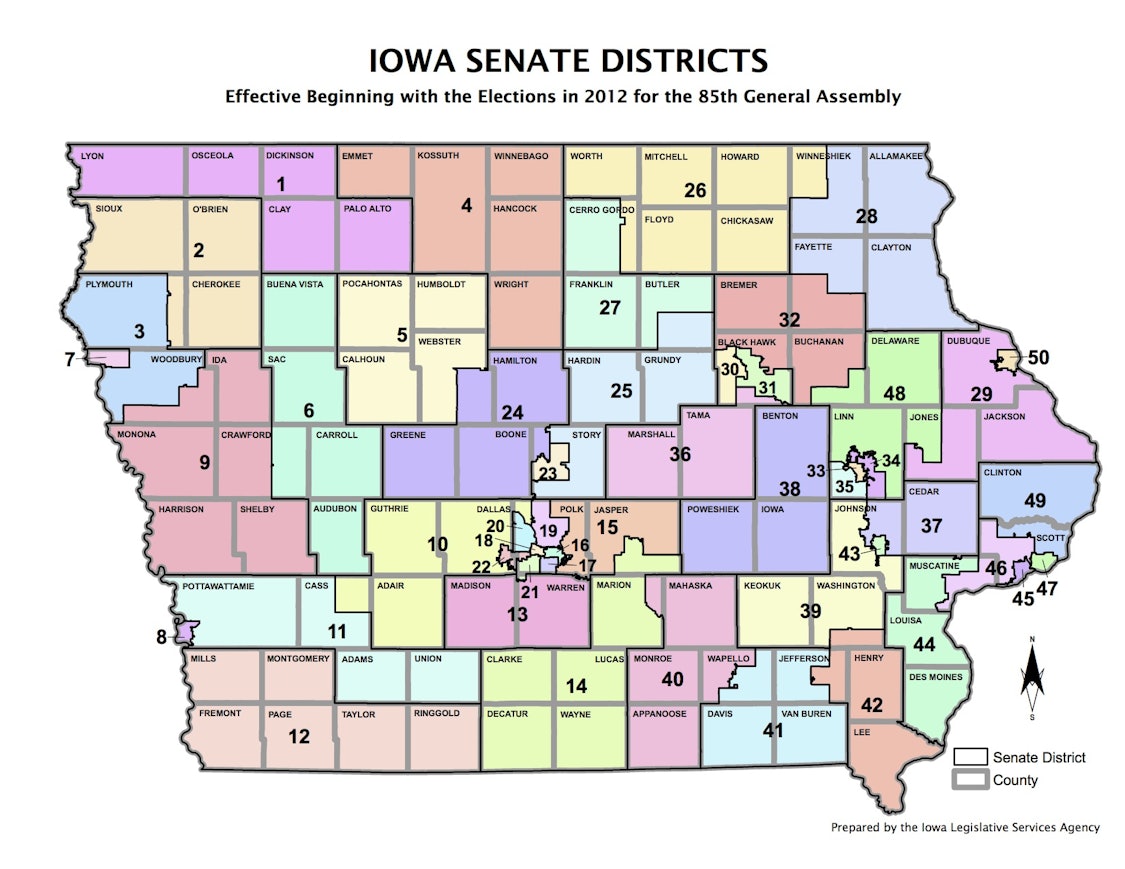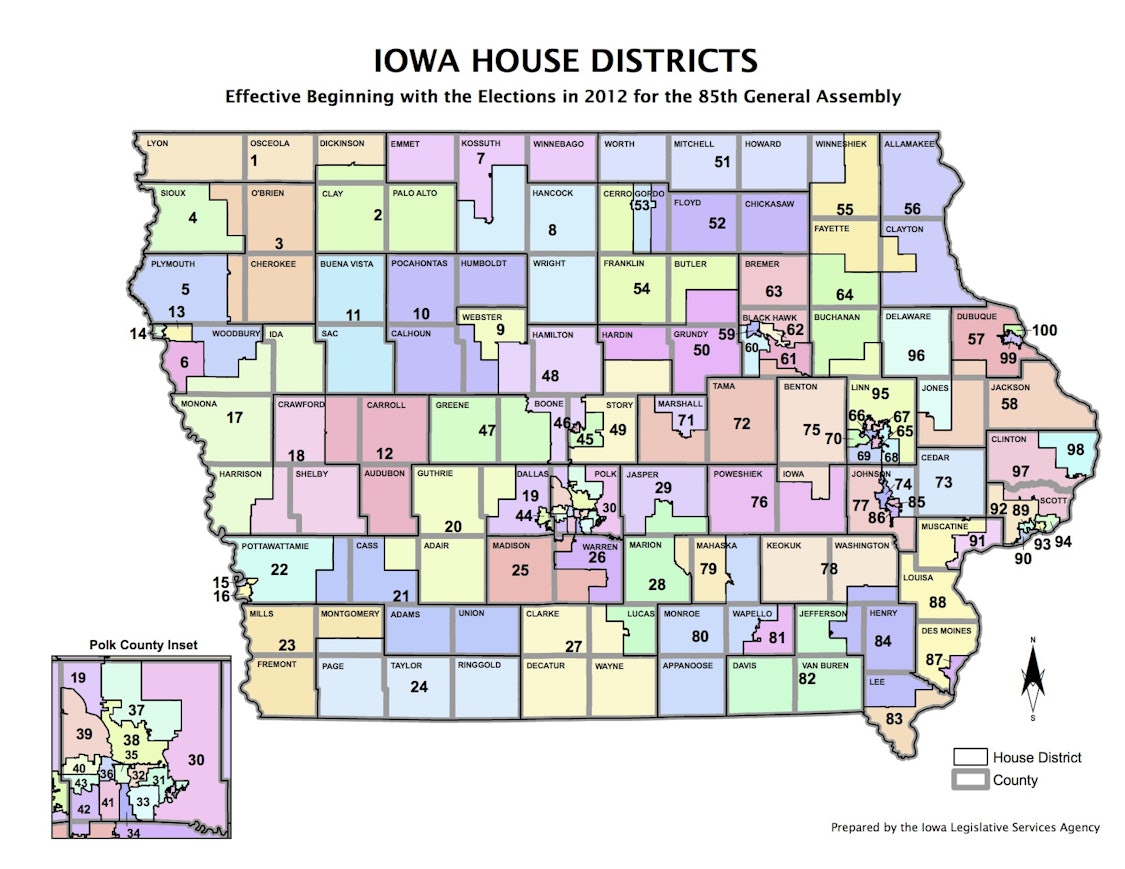Iowa’s nonpartisan Legislative Services Agency released the second redistricting plan on October 21.
Although Republican leaders have not signaled their intentions publicly, I anticipate they will accept this package. Not only does it give the GOP a shot at sweeping all four U.S. House districts, it appears to solidify the party’s majorities in the state House and Senate for some time. Former lawmakers and longtime Iowa politics watchers have uniformly told me that lawmakers are more concerned with the legislative maps than the Congressional plan.
Bleeding Heartland will cover the new maps in more detail if the legislature approves them during the October 28 special session.
For now, a quick review of the big picture: as expected, the House and Senate maps create some opportunities for Democrats in growing urban and suburban areas. But as Evan Burger predicted early this year, that’s not enough to get the party to legislative majorities without winning back some ground in smaller counties or mid-sized cities where Democrats used to perform well.
PLAN 2 FOR THE IOWA SENATE
Most Iowa counties have been losing population for a long time, and that trend continued during the 2010s. As a result, the new legislative maps contain more districts in large metro areas, and fewer districts containing only small towns and rural areas. Here’s the proposed state Senate map.
For comparison, here’s the current Iowa Senate map.
According to an analysis prepared by Iowa Senate Democratic staff, the eighteen Democrats now serving in the upper chamber live in sixteen of the proposed districts. A few of those could be tough holds, but let’s assume they would hold all sixteen. Democrats have a good chance of winning several newly created districts in Polk, Linn, or Scott counties, some of which have no incumbent. (You can view the insets for the larger counties in the full document prepared by LSA.)
Democrats could realistically contend for several newly created seats in suburban areas in Polk, Dallas, or Linn counties.
Victories in those districts wouldn’t bring Democrats to 26 out of 50 seats without winning back at least a few former strongholds. Under this plan, Webster County (Fort Dodge) and Wapello County (Ottumwa) would be grouped with deep red counties in Senate districts that seem out of reach for Democrats.
In a good year, the Senate seat covering Clinton County might be winnable, but history tells us 2022 (when odd-numbered Senate seats will be on the ballot) will be tough for members of the president’s party.
The proposed Senate districts 10 (Council Bluffs), 26 (Marshall County and much of Story outside Ames), and 50 (the city of Burlington plus Lee County/Keokuk) seem like plausible targets, but won’t be on the ballot until 2024. And if Donald Trump became the GOP presidential nominee again, he could have coattails in those areas. CORRECTION: Two Republican senators now live in what would be Senate district 50. If both decide to compete for the seat, it would be on the ballot in 2022 and again in 2024.
PLAN 2 FOR THE IOWA HOUSE
Here’s LSA’s proposal for the lower chamber. Insets showing district lines in larger cities are in the full document.
For comparison, here is the current Iowa House map.
I will write more about the Iowa House maps if Republicans adopt this plan. Charles Nuttycombe, who tracks state legislative races around the country, already posted his assessment. He sees Republicans easily holding a majority, with a chance at improving on their current 60-40 advantage.
The analysis prepared by Iowa Senate Democratic staff indicates that the 40 currently serving House Democrats now live in 35 of the proposed House districts. The majority of those should not be difficult holds. Some lawmakers who are now paired with fellow incumbents could move into nearby districts with no incumbent. For now, let’s assume 40 seats remain in Democratic hands.
As with the state Senate maps, Democrats have potential to pick up some new suburban seats in Polk and Linn counties, and maybe also in Scott. I’d welcome thoughts from locals on which of the proposed districts might be competitive, and who might run for the legislature in 2022.
Getting to 51 House seats would require winning back some districts anchored in medium-sized cities where voters have drifted away from Democrats lately. Places like Boone or Muscatine (which Republicans flipped in 2010), Fort Dodge (2018), Keokuk or Ottumwa (2020), and Newton (lost in a special election last week).
In recent memory, Democrats held quite a few state House seats containing counties with no cities larger than 10,000 people. But voters in those smaller counties (mostly in northeast or southeast Iowa) trended strongly toward Republicans over the last several election cycles. Todd Prichard is the only remaining House Democrat representing this kind of territory.
That’s not to say Democrats could never compete in rural areas again, and I would like to hear from knowledgeable readers about proposed seats that look like reasonable prospects, if the LSA’s Plan 2 is adopted.
Do you have insight on the proposed Iowa House or Senate districts in your area? Contact Laura Belin confidentially with tips on who might run, who might move or retire, and how competitive any new legislative districts might be.






1 Comment
Good helpful analysis, thank you!
It would be interesting to know to what extent young Iowans who have views that would make them likely Democratic voters, now or in the future, have been taking hard looks at Iowa over the past ten years and then moving to other states. The old cliche, forty years ago, used to be that many of those young people would come back to Iowa when they were ready to raise children. I wouldn’t bet on that now.
PrairieFan Fri 22 Oct 1:07 PM